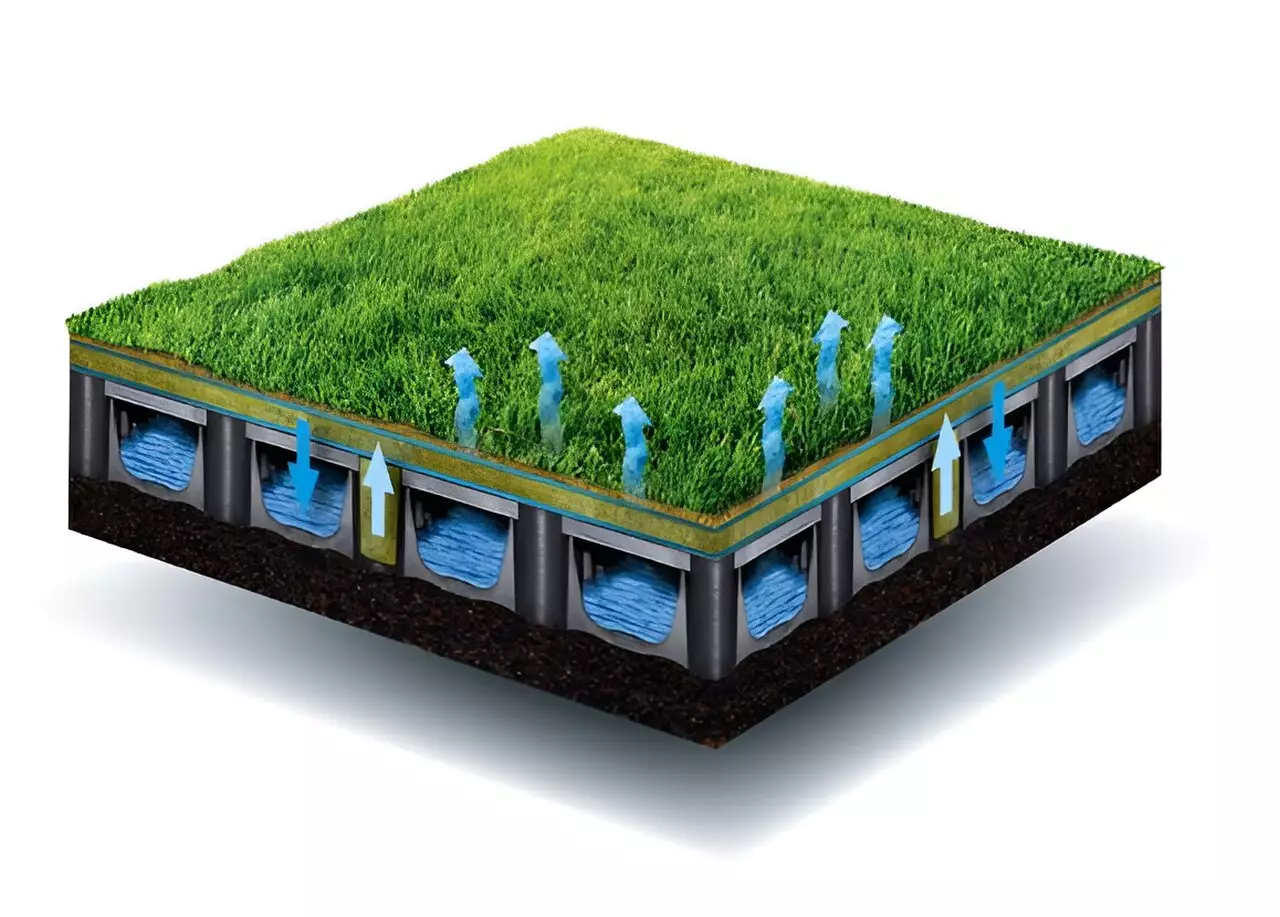

Cities often struggle to provide enough space for outdoor sports, leading to the replacement of natural grass with artificial turf on sports fields. While artificial turf is durable and can withstand heavy use, it comes with its own set of problems. In an effort to address these issues, scientists in the Netherlands have pioneered a new approach by incorporating a subsurface water storage and capillary irrigation system beneath artificial turf sports fields.
Dr. Marjolein van Huijgevoort, a hydrologist at KWR Water Research Institute, led the research on this innovative system. By storing rainwater in the subsurface layer directly under the artificial turf, the system allows for evaporative cooling to occur. This process helps to regulate surface temperatures, preventing them from reaching dangerous levels commonly seen on conventional artificial turf fields.
The cooled turf not only maintains lower surface temperatures, reducing the risk of injuries and heat-related illnesses, but it also contributes to a healthier urban environment. By combining the advantages of both artificial turf and natural grass, this system offers durability, self-cooling properties, and a reduced impact on the urban heat island effect. Additionally, it has a rainwater retention capacity comparable to natural grass, aiding in stormwater management and urban flood mitigation.
While the benefits of the cooling turf are significant, there is a substantial cost associated with its installation. The upfront costs can be up to twice as expensive as traditional artificial turf fields. To determine the true value of this investment, a comprehensive cost-benefit analysis is necessary. Additionally, further research is needed to understand the long-term impact of cooling turf on the surrounding area and how it can be optimized for different climates and urban contexts.
Despite the challenges and costs involved, the initial results of the research are promising. As urban areas continue to experience high demand for sport and play facilities, innovative solutions like cooling turf could play a crucial role in creating sustainable and safe recreational spaces. By prioritizing the health and well-being of residents, especially children, cities can embrace these new technologies to enhance the urban landscape for future generations.
In the realm of software development, the ability to swiftly and accurately address bugs is…
The realm of quantum computing and communication is not just an abstract dream anymore; it…
In a remarkable leap for the field of material science, a collaborative research initiative has…
Throughout Earth's vast history, our planet has endured five major mass extinction events that reshaped…
Rainfall is a vital element of our planet’s hydrological cycle, yet many aspects of its…
On a night when the universe aligns, a mesmerizing phenomenon awaits: the appearance of the…
This website uses cookies.